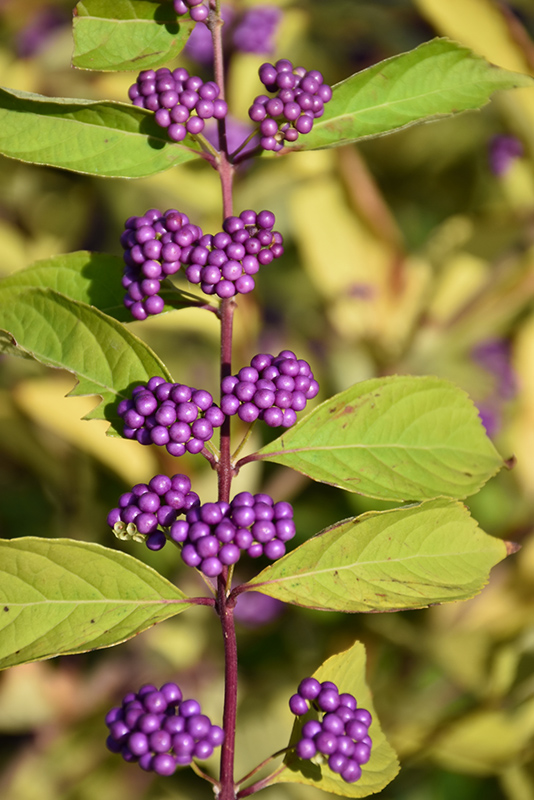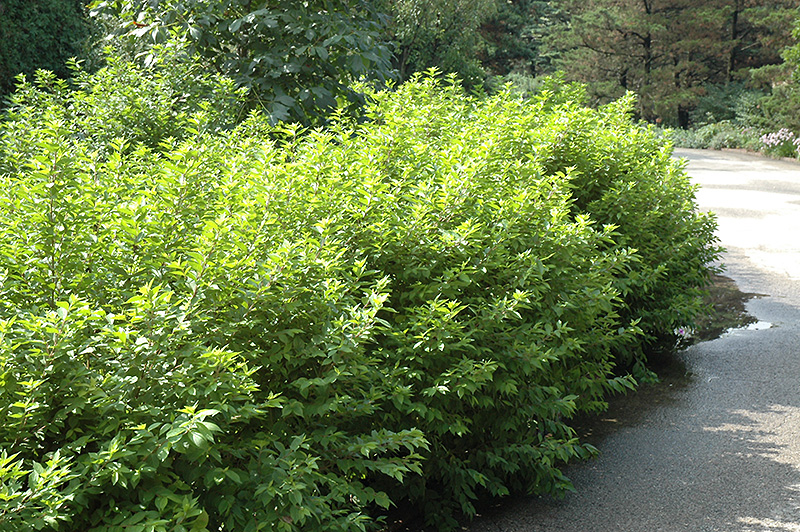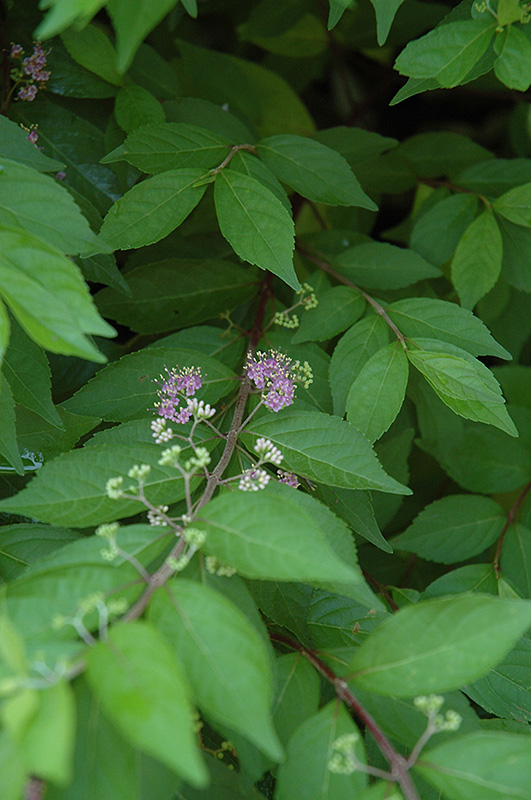Height: 6 feet
Spread: 6 feet
Sunlight:
![]()
![]()
Hardiness Zone: 5a
Description:
As its name implies, this garden shrub is grown primarily for its unusual and highly attractive shiny violet fruit, also pretty lavender-pink flowers; bushy and arching habit of growth, can be pruned back to the ground in spring as it blooms on new wood
Ornamental Features
Japanese Beautyberry is primarily grown for its highly ornamental fruit. It features an abundance of magnificent violet berries from mid to late fall. It has lavender trumpet-shaped flowers with pink overtones along the branches in mid summer, which are interesting on close inspection. It has bluish-green deciduous foliage. The pointy leaves do not develop any appreciable fall color.
Landscape Attributes
Japanese Beautyberry is a multi-stemmed deciduous shrub with a more or less rounded form. Its average texture blends into the landscape, but can be balanced by one or two finer or coarser trees or shrubs for an effective composition.
This shrub will require occasional maintenance and upkeep, and is best pruned in late winter once the threat of extreme cold has passed. It has no significant negative characteristics.
Japanese Beautyberry is recommended for the following landscape applications;
- Mass Planting
- General Garden Use
Planting & Growing
Japanese Beautyberry will grow to be about 6 feet tall at maturity, with a spread of 6 feet. It tends to fill out right to the ground and therefore doesn't necessarily require facer plants in front, and is suitable for planting under power lines. It grows at a fast rate, and under ideal conditions can be expected to live for approximately 20 years.
This shrub does best in full sun to partial shade. It is very adaptable to both dry and moist locations, and should do just fine under average home landscape conditions. It may require supplemental watering during periods of drought or extended heat. It is not particular as to soil type or pH. It is highly tolerant of urban pollution and will even thrive in inner city environments. This species is not originally from North America.
Disclaimer - This Plant Finder tool is an online resource representing many of the varieties that we carry over the course of the season, and is intended for informational purposes only. Inventory varies seasonally, so we cannot guarantee that every plant will be in stock at all times - please contact the store directly for current availability. It does not include our entire selection of plants, so be sure to visit our store to see varieties that may not be represented on this list.



